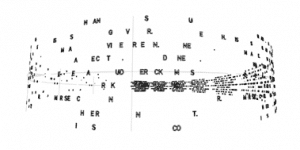When we reflect on the past and wonder about the potential and promise of the future, it is the actions we take in the present that have the greatest impact. The commemorative landscape of the Place des Montréalaises is, through architecture, one of those decisive actions we’ve taken for positive change.
Located between the heritage and history of Old Montreal on one end, and the progress and innovations of the downtown core on the other, the Place des Montréalaises seeks to bring active change to our cities’ tributary traditions and help set a new precedent for who we recognize and honour moving forward.
Recognition and appreciation
It’s a sweeping, restorative gesture in a world that has historically underrepresented women in its public spaces and public art—in Montreal alone, less than a quarter of its public spaces¹ bear the names of women while public art has and continues to historically lack in the commission of women artists², and this is far from unique to Canada³. Here, at the Place des Montréalaises, 21 women who have experienced great struggles and made great strides and accomplishments for both the past and the future of Montréal are memorialized. Not through statues or street names, but through a great urban perennial meadow made up of 21 bouquets – one for each name:
Each of the 14 victims of the 1989 École Polytechnique feminicide…
- Geneviève Bergeron (born 1968), civil engineering student
- Hélène Colgan (born 1966), mechanical engineering student
- Nathalie Croteau (born 1966), mechanical engineering student
- Barbara Daigneault (born 1967), mechanical engineering student
- Anne-Marie Edward (born 1968), chemical engineering student
- Maud Haviernick (born 1960), materials engineering student
- Maryse Laganière (born 1964), budget clerk in École Polytechnique’s finance department
- Maryse Leclair (born 1966), materials engineering student
- Anne-Marie Lemay (born 1967), mechanical engineering student
- Sonia Pelletier (born 1961), mechanical engineering student
- Michèle Richard (born 1968), materials engineering student
- Annie St-Arneault (born 1966), mechanical engineering student
- Annie Turcotte (born 1969), materials engineering student
- Barbara Klucznik-Widajewicz (born 1958), nursing student
…and 7 pioneering women of Montreal:
- Myra Cree (1937-2005), an Aboriginal of Mohawk origin distinguished for her work in the field of culture and communications, most notably by becoming the first woman to hold the position of news anchor at Téléjournal de Radio-Canada.
- Jessie Maxwell-Smith (1920-2000), a teacher from Little Burgundy whose work in education and social development helped the black community in Montreal gain access to quality education.
- Agnès Vautier (1896-1976), a hockey player for the Montreal Western, a notoriously unbeatable team in 1917.
- Ida Roth Steinberg (1885-1942), a Jewish-Hungarian immigrant turned businesswoman who founded the first Steinberg grocery store in Montreal.
- Idola Saint-Jean (1880-1945), Quebec feminist and activist for women’s right to vote.
- Harriet Brooks (1876-1933), Canada’s first female nuclear physicist.
- Jeanne Mance (1606-1673), a French nurse who co-founded the city and its first hospital, the Hôtel-Dieu de Montréal.
Connection and reflection through place and art

Credits: Lemay + Angela Silver
In embracing the power of those names on its sculpture and its steps, and by claiming new territory in the city those names called home, the site is a both powerful act of recognition and a place of serene reflection. Its field of tribute gives value to the history of women, and gives visibility to women—known, unknown, and forgotten—in a boldly public way.
“It acknowledges and celebrates women through the landscape itself. We’ve created a platform for the expression of all women, to speak about their realities and to spark conversations,” explains Patricia Lussier, landscape architect and design director for the Place des Montréalaises.
It is a place of connection, extending from the core of its urban meadow outward: Its grand, universally accessible inclined plane connects the old city and the new as a bridge over a divisive expressway; two hectares of trees and memorializing flowers deepen the connection between the urban and the natural; and public art on site invites Montrealers to gather, reflect, discuss, and understand past disparities and future possibilities.
To feel included in a city, you must be seen there
In a sculptural homage contributed with Canadian artist Angela Silver, the names of the 21 women are both presented in full and are fragmented into letters. This text runs the length of a towering polished stainless-steel cylinder in such a way that visitors can read the names of the women, but also see themselves in its mirrored surface. By night, the sculpture becomes a nocturnal work of art when its perforated lettering lights up, creating a new constellation of memories in the middle of the city.

credit : Angela Silver
Joining the 21 women are two more montréalaises: One is the preexisting work of Canadian Québécoise artist Marcelle Ferron, whose stained-glass piece Verre-écran was the first abstract non-sculptural work commissioned by the STM Montreal metro. This beautiful, kaleidoscopic window can be found on the site wrapping the ground-level windows of the Champ-de-Mars station.
The second is Afua Cooper’s 2006 quote, “Marie Joseph Angelique an immortal avatar of our liberation”, has been translated to French and engraved on the ground at the site. The historian and author wrote on Marie Joseph Angelique, a Portuguese-born black slave of New France.
“There are a few ways to commemorate or pay homage. There’s the statutory and you can use names, but for me, the power of names and practice of naming is strong,” explains Angela Silver. “It’s way of addressing and recognizing women in public memory and valuing their contributions through giving them equal civil space.”
A landscape of change
Aligned with the City of Montreal’s ongoing initiative for greater recognition of women through place making, the Place des Montréalaises is designed to embody its purpose: To create a vast, perennial meadow that pays homage to all women.
In these names selected by Montreal’s Conseil des Montréalaises, we find a welcome break in the traditions of bronze sculptures, and a place that embodies equality and inclusion. The significance behind taking such a central location in the city and reconfiguring it can’t be denied, explains Angela Silver.
“To give this much real estate to women is a powerful assertion of what this place is trying to do, and what Montreal is doing by giving this much prominent space, is highly ideological,” she says, pointing to how the site’s power resides in its dedication to women.
“On a larger scale, when you’re in the middle of it,” Patricia Lussier adds, “you see the new and old city, you see the sculpture and stained glass, the stairs, and it forms different levels of appreciation and acknowledgement.”
Watch Andrew King, design principal, explain the project and its context through storytelling and sketches here.
¹ source: Montreal: Confronting the Sexist City – Women Across Frontiers Magazine (wafmag.org)
² source: Women in public art: The Montreal Edition — SHELLEY MILLER (shelleymillerstudio.com)
³ source: Why Are There So Few Monuments That Successfully Depict Women? – The New York Times (nytimes.com)


